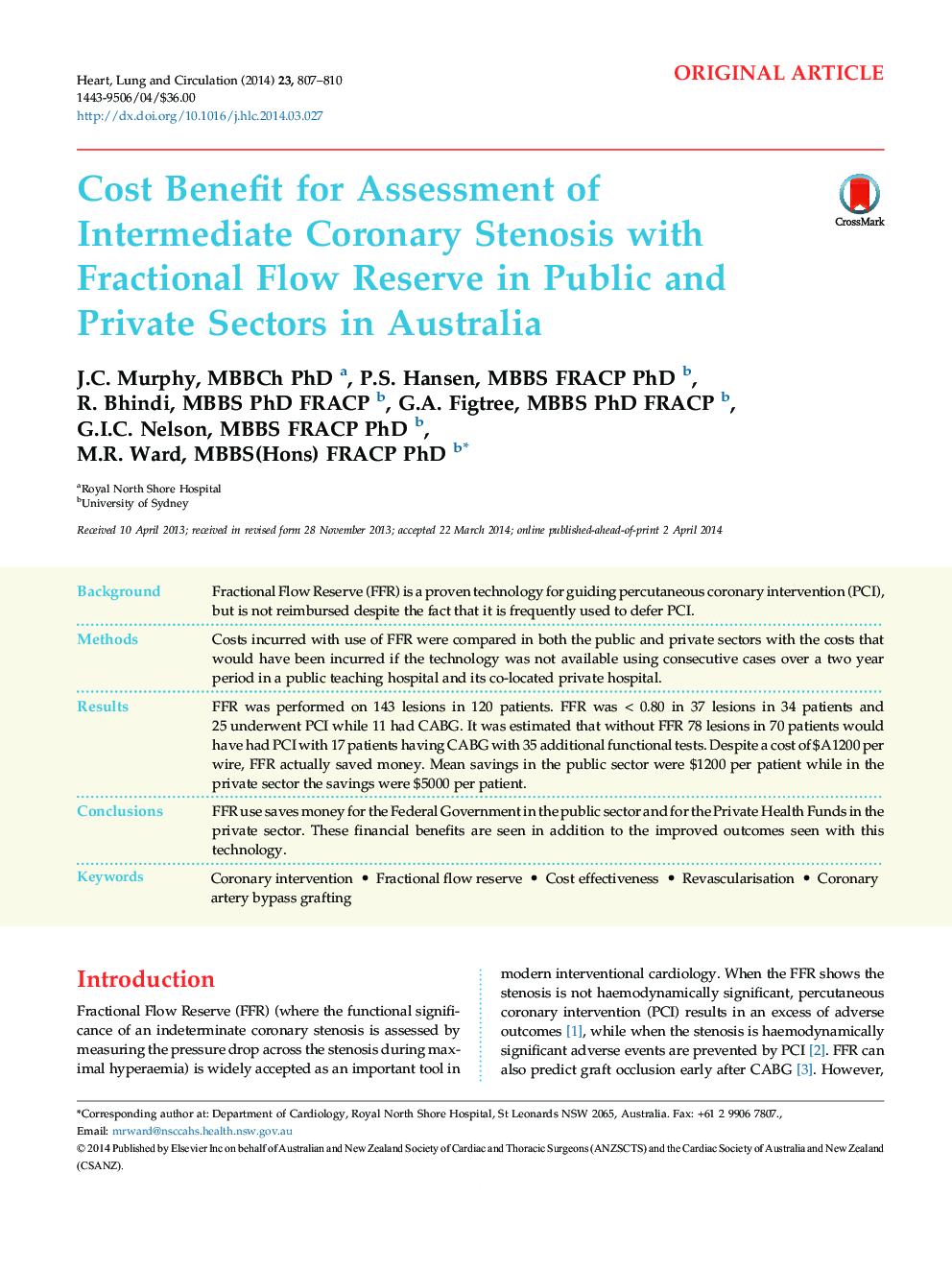| Article ID | Journal | Published Year | Pages | File Type |
|---|---|---|---|---|
| 2917916 | Heart, Lung and Circulation | 2014 | 4 Pages |
BackgroundFractional Flow Reserve (FFR) is a proven technology for guiding percutaneous coronary intervention (PCI), but is not reimbursed despite the fact that it is frequently used to defer PCI.MethodsCosts incurred with use of FFR were compared in both the public and private sectors with the costs that would have been incurred if the technology was not available using consecutive cases over a two year period in a public teaching hospital and its co-located private hospital.ResultsFFR was performed on 143 lesions in 120 patients. FFR was < 0.80 in 37 lesions in 34 patients and 25 underwent PCI while 11 had CABG. It was estimated that without FFR 78 lesions in 70 patients would have had PCI with 17 patients having CABG with 35 additional functional tests. Despite a cost of $A1200 per wire, FFR actually saved money. Mean savings in the public sector were $1200 per patient while in the private sector the savings were $5000 per patient.ConclusionsFFR use saves money for the Federal Government in the public sector and for the Private Health Funds in the private sector. These financial benefits are seen in addition to the improved outcomes seen with this technology.
